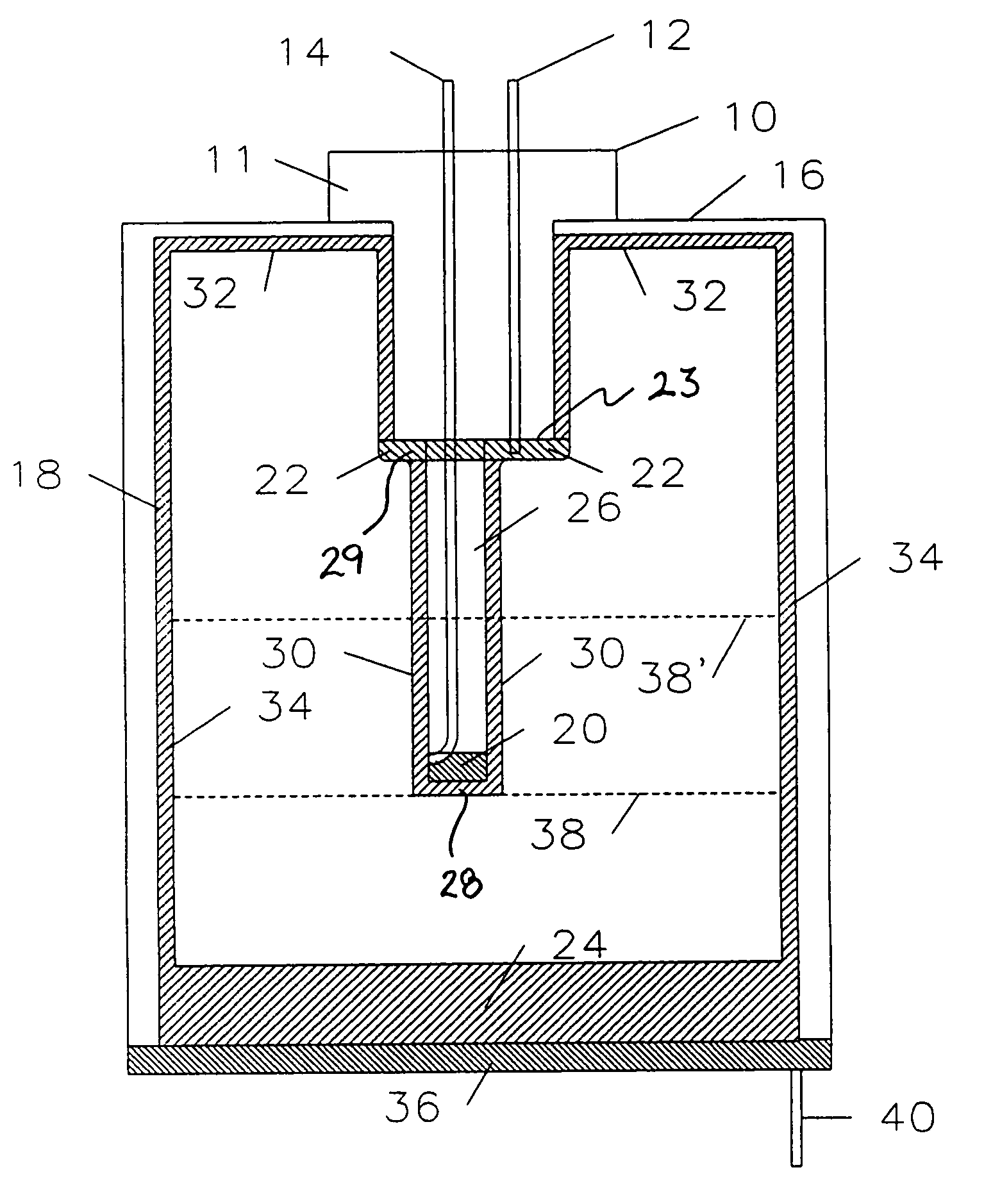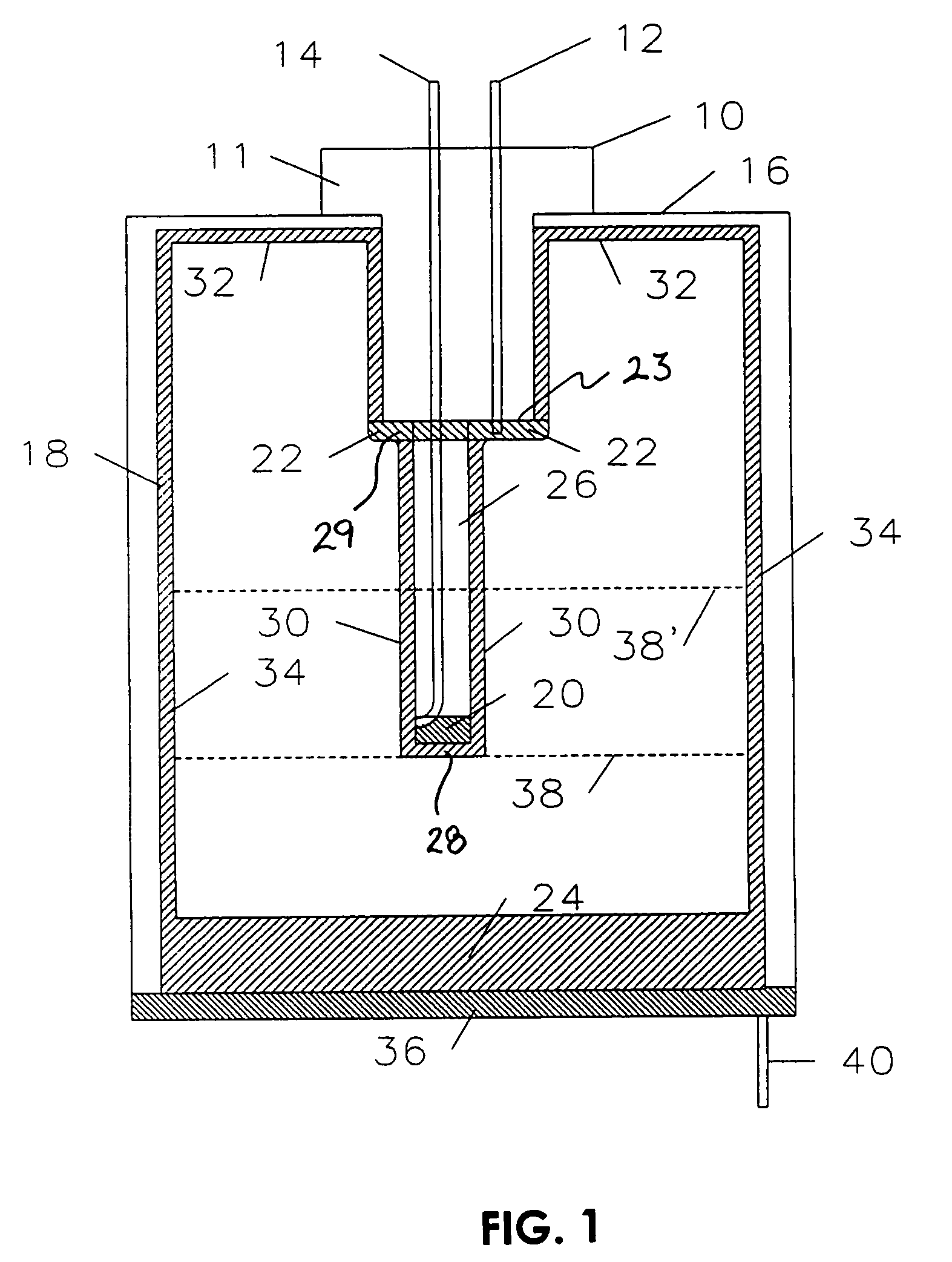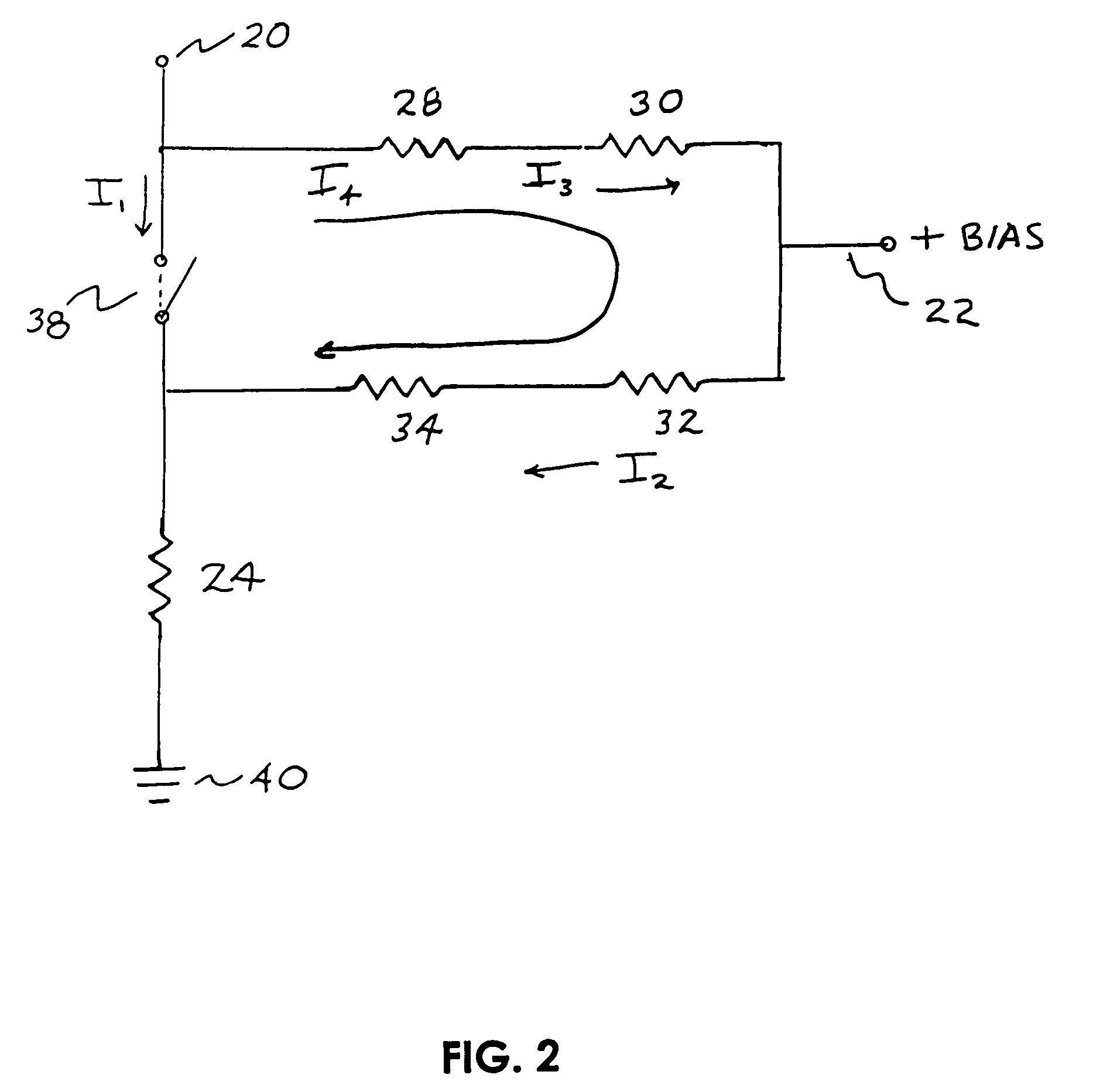Liquid level sensor having a virtual ring
a liquid level sensor and virtual ring technology, applied in liquid/fluent solid measurement, instruments, machines/engines, etc., can solve the problems of high manufacturing cost of sensor types, limited use of containment, and unclear how this can inhibit or stop the formation of residues
- Summary
- Abstract
- Description
- Claims
- Application Information
AI Technical Summary
Benefits of technology
Problems solved by technology
Method used
Image
Examples
Embodiment Construction
[0022]Referring first to FIG. 1, an illustration of the sensor 10 is shown. The invention is a liquid level sensor that prevents a false “full” reading due to the build-up of conductive residue 18. Residue 18 usually consists primarily of the highly conductive liquid 24 that fails to drain from the inside of tank 16. In this case, liquid 24 is typically dishwasher soap or hard water that may be encountered in sump pump applications. This type of situation typically worsens in aging systems due to fluid contamination by metals and salts in the system.
[0023]Tank 16 holds liquid 24 which must be maintained below or at a predetermined level 38. As noted above, many elaborate schemes have been developed to determine when liquid 24 is less than level 38. However, the least expensive of these is a simple conductive circuit having a sensor that causes a light or other indicator well known in the art to be either activated or deactivated once the liquid level is below or at level 38.
[0024]As...
PUM
 Login to View More
Login to View More Abstract
Description
Claims
Application Information
 Login to View More
Login to View More - R&D
- Intellectual Property
- Life Sciences
- Materials
- Tech Scout
- Unparalleled Data Quality
- Higher Quality Content
- 60% Fewer Hallucinations
Browse by: Latest US Patents, China's latest patents, Technical Efficacy Thesaurus, Application Domain, Technology Topic, Popular Technical Reports.
© 2025 PatSnap. All rights reserved.Legal|Privacy policy|Modern Slavery Act Transparency Statement|Sitemap|About US| Contact US: help@patsnap.com



